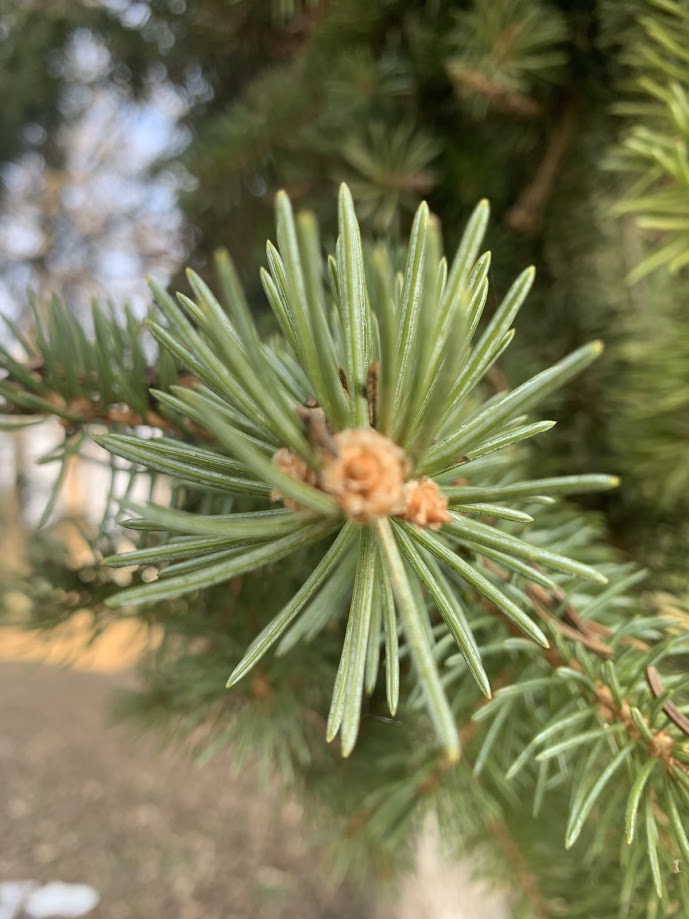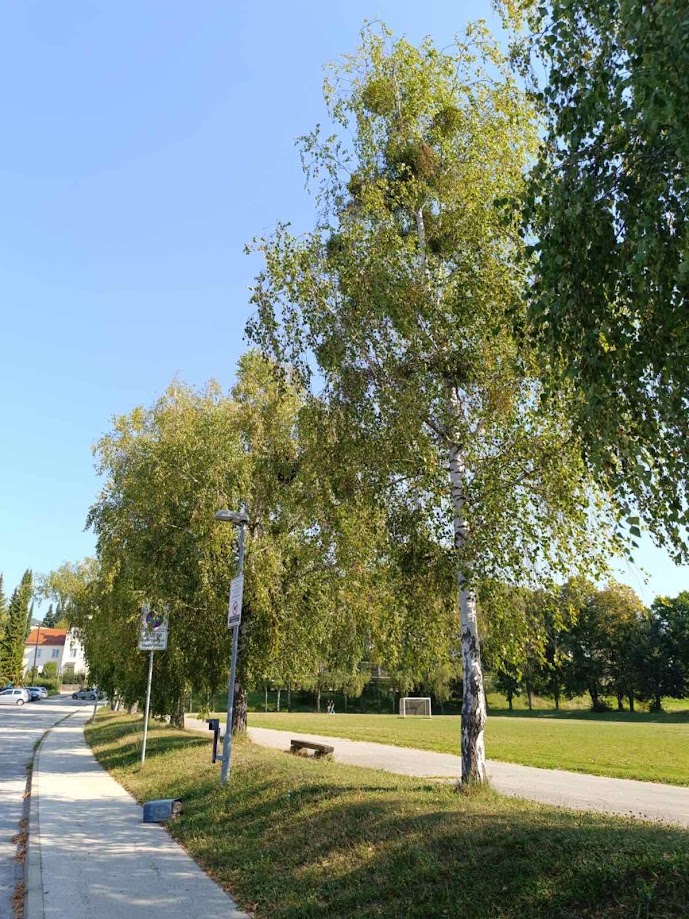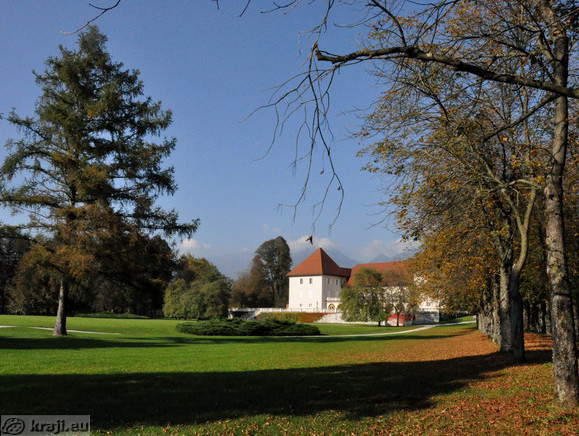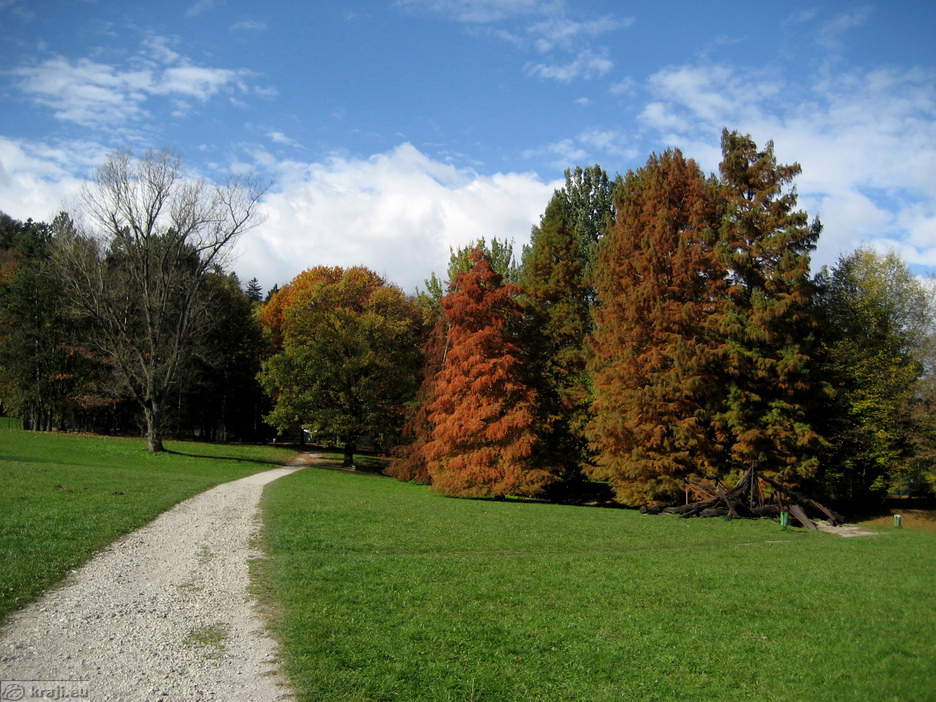
Planting and growing the right tree, in the right place, and for the right purpose requires long term planning and monitoring. In practice, this means planting the right mix of tree species not only in forests, but also in agroforestry, agricultural and urban areas. No trees should be planted in areas of high nature value such as mires, bogs, fens, wetlands, peatlands, and grasslands.

Click here for Guidelines on afforestation, reforestation & tree planting

The European Union has pledged plant 3 billion additional trees by 2030. This is part of its ambition to bring nature back to Europe and tackle climate change – and everyone can join in!
Discover our 3 Billion Trees material with useful information on how to do tree-planting the right way and how to make your planting action count towards the EU’s goal of 3 billion trees by 2030!
Click here to watch the video
https://audiovisual.ec.europa.eu/en/video/I-228918?lg=EN&sublg=en
On March 21, 2025, the Vocational College of Hospitality and Tourism Maribor (VSGT Maribor) embarked on a unique journey through Maribor’s edible trees as part of the ForestWell project. This initiative, coordinated at the EU level, aims to highlight the importance of forest tourism, gastronomy, and wellness. The event coincided with the International Day of Forests, celebrated under the motto "Forest and Food."

Photo 1: Guided tour with botanical description and its culinary uses (Photo Credit: Borut Ambrožič)
The Significance of Forests
Forests play a crucial role in the lives of over five billion people worldwide by providing food, medicine, and livelihoods. In some regions, forests contribute up to 20% of rural household income. The ForestWell project emphasizes the importance of forests in ensuring food security, especially during times of crisis or scarcity.

Photo 2: »Forest and food« International forests day
The Edible Trees of Maribor
During the guided tour, participants explored ten tree species found in the wider city center of Maribor. Each tree was introduced with a botanical description and culinary description. The following are some of the highlights.
1. Drooping Willow (Salix x sepulcralis ‘Chrysocoma’)
Location: Between the Old Bridge and the new footbridge on Lent in Maribor
Recipe: Willow catkin biscuits
Description: Willows are deciduous trees that are known for their rapid growth and medicinal properties. Biscuits made from willow catkin flour are a unique treatment method.

Photo 3: Droping willow in Maribor (Photo Credit: Borut Ambrožič)
2. Almond Tree (Prunus dulcis)
Location: At the Almond restaurant, Kneza Koclja street in Maribor
Recipe: Garlic pesto with almonds
Description: Almonds are versatile ingredients that are rich in calcium and beneficial for digestion. Garlic pesto with almonds is a flavorful addition to any meal.

Photo 4: Almond tree in Maribor (Photo Credit: Borut Ambrožič)
3. Linden (Tilia platyphyllos)
Location: By the National Liberation Front monument, Square of Freedom
Recipe: Hot lemonade with linden blossom tea
Description: Linden flowers are known for their medicinal properties and are used to make soothing tea and honey.

Photo 5: Linden tree (Photo Credit: Borut Ambrožič)
4. Ginkgo Biloba (Ginkgo biloba)
Location: Maribor Castle
Recipe: Ginkgo seed jam
Description: Ginkgo trees are ancient and long lived. Once properly prepared, seeds can be used to create a unique jam.

Photo 6: Ginko Biloba tree (Photo Credit: Borut Ambrožič)
5. Common Yew (Taxus baccata)
Location: General Maister square – park at Gymanisum
Recipe: Yew jam
Description: Yew berries, although toxic in parts, can be used to make jams when the seeds are carefully removed.

Photo 7: Common yew tree (Photo Credit: Borut Ambrožič)
6. Sulanž` Magnolia (Magnolia x soulangeana)
Location: Park at the Museum of National Liberation Maribor
Recipe: Pickled magnolia flowers in vinegar
Description: Magnolia flowers are pickled in vinegar in some cultures, adding a unique flavor to dishes.

Photo 8: Magnolia flower (Photo Credit: Borut Ambrožič)
7. Spruce (Picea abies)
Location: Maribor City Park - several locations
Recipe: Spruce oil
Description: Spruce needles can be used to make oil, which is beneficial for salad dressings or drizzling over ice cream.

Photo 9: Spruce (Photo Credit: Borut Ambrožič)
8. Red Pine (Pinus sylvestris)
Location: Maribor City Park - opposite the school dispensary
Recipe: Pine needle liqueur
Description: Pine needles are used to make a refreshing liqueur that is perfect for a unique drink.

Photo 10: Red Pine tree (Photo Credit: Borut Ambrožič)
9. Beech (Fagus sylvatica)
Location: Maribor City Park - in the vicinity of the Rose Hill
Recipe: Acorns coffee
Description: Beech nuts can be used to make coffee, offering a nutty and rich flavor.
(Photo Credit: Borut Ambrožič)

Photo 11: Beech tree
10. Common Birch (Betula pendula)
Location: Various locations
Recipe: Rice rolls with birch leaves
Description: Birch leaves are edible and can be used in salads or wraps for rice rolls.

Photo 12: Common birch tree (Photo Credit: Borut Ambrožič)
Try this recipe:
RECIPE FOR YEW JAM
500 g yew berries (without seeds!)
300 g apples or pears (for better texture and pectin)
300 g sugar
1 lemon (juice and zest)
1 dcl water
1 teaspoon vanilla extract (optional)
Preparation of yew fruits
The seeds were carefully removed, and only the red-fleshy part of the fruit was used.
Wash under running water.
Peel the apples or pears, remove the pips, and cut them into pieces.
The fruit, fruit, sugar, lemon juice, zest, and water were placed in pots.
Cook over a moderate heat for approximately 30-40 minutes until everything is soft.
Puree or blend with a stick blender, if desired.
Just before the end of cooking, vanilla extract was added.
Would you like more recepies, follow us on the wepage news!
Conclusion
The journey through the edible trees of Maribor, organized by the Vocational College of Hospitality and Tourism Maribor (VSGT Maribor) as part of the ForestWell project, has been a remarkable exploration of nature's culinary treasures. This initiative, aligned with the International Day of Forests, underscores the vital role that forests play in providing food, medicine, and livelihoods to billions of people worldwide.
Participants had the opportunity to learn about ten different tree species found in Maribor's city center, each offering unique culinary possibilities. From willow catkin biscuits to pine needle liqueur, these recipes showcase the diverse and nutritious options available from trees. The event highlighted the importance of forests in ensuring food security, especially during times of crisis or scarcity.
The ForestWell project not only promotes forest tourism, gastronomy, and wellness but also encourages sustainable and creative use of forest resources. By exploring the edible trees of Maribor, we gain a deeper appreciation for the natural heritage of the city and the potential of forests to enrich our diets and lives.
As we continue to discover and utilize the edible parts of trees, we will contribute to a more sustainable and resilient future. Culinary adventure through Maribor's edible trees is a testament to the innovative ways we can connect with nature and celebrate its bounty.

Urban trees are an indispensable part of the urban environment. They not only contribute to the aesthetic value of cities but also have important ecological, health, and social functions. In Slovenia, we are aware of the importance of urban trees; however, their management is often neglected.
Urban trees play a key role in the adaptation to climate change. They absorb CO2, clean air, retain rainfall and wind, and mitigate temperature extremes (https://ipop.si/2020/11/06/veliko-zanimanje-in-skrb-za-mestna-drevesa/). Ljubljana, awarded the title of European Green Capital in 2016, is aware of these benefits and takes special care of the city's trees (https://www.ljubljana.si/sl/aktualno/skrbimo-za-drevesa-v-mestu/).
In addition to their ecological functions, urban trees provide important health and social benefits. These contribute to better mental health, reduce stress, and promote physical activity.
Despite its many benefits, the management of urban trees in Slovenia is often professionally and systemically neglected. The public part of the municipal tree stock is managed by public utilities, whereas the rest of the trees are managed by anyone. This leads to unprofessional pruning, damage, and unnecessary felling of trees.
Examples from Slovenian cities
In Maribor, they faced challenges such as weevil infestation in the City Park, where several spruce trees had to be felled. However, new trees such as Caucasian fir, red pine, Atlas and Himalayan cedar have been planted, which are more resistant to pests and contribute to greater biodiversity. Unfortunately, new trees are often targeted by vandals, posing additional challenges for city authorities.

Celje Urban Forest is home to Slovenia's largest tree house, which is popular among visitors. In addition, the tallest tree in Slovenia, Pečovnik Douglasia, which measures 67.02 metres, was measured in the City Forest. Celje also boasts of a variety of adventure and educational trails that bring visitors into contact with nature.

more than 1 000 trees have been planted in Kranj in recent years, including a pear tree in Planina and the European Tree of Integration and Cooperation in Brdo pri Kranju. The Municipality of Kranj has also launched the ‘Adopt a Tree’ campaign, where residents and businesses can adopt a tree and contribute to its care.

Urban trees are key building blocks for sustainable cities. There are still many opportunities to improve the management of urban trees in Slovenia; however, positive developments are already visible. With proper care and planning, urban trees can contribute to a healthy and pleasant urban environment.
Sustainable development and urban trees
Sustainable urban development involves a holistic approach for the design, planting, and maintenance of urban trees. In Slovenia, there is growing awareness of the importance of sustainable management of urban trees, which includes educating and raising awareness of the importance of trees for a healthy and pleasant urban environment.
Additional examples of sustainable practices
The Municipality of Kočevje has established a catalogue of urban trees, which is used as a basis for planning tree management measures and planting new trees. At least 30-40 new trees are planted annually. Their responsible management earned them the title "World Tree City.”
In Ajdovščina, private donations were used to plant trees and shrubs and to learn about proper tree management.
The Carinthian company, Lesoteka, deals with the whole chain, from logging in the forests to the final product, the wooden house. Their main goal is to process wood at home and offer Slovenian wood to Slovenian consumers. They offer environment-friendly solutions by producing traditional log houses and modern houses made of cross-laminated timber.

How can I contribute to sustainable practice?
Everyone can contribute to sustainable practices by planting trees, caring for existing trees, educating others, or supporting local projects. Thus, we can create greener and more sustainable cities for future generations.

In recent years, forest-based tourism has grown into a global megatrend, attracting travellers seeking both wellness and environmental connection. From forest bathing to outdoor wellness retreats, this trend is not only about mental and physical rejuvenation but also about fostering sustainability. The ForestWell project is uniquely positioned to enhance this movement by combining vocational education and cutting-edge tools like Augmented Reality (AR) to prepare learners for the future of the tourism industry.
The Power of Forest-Based Tourism
The appeal of forests is timeless. They provide spaces of peace, tranquillity, and renewal—a much-needed antidote to the stresses of modern life. Global Wellness Summit (2022) noted that restorative trips into nature are now a top priority for travellers, especially after the COVID-19 pandemic. This rising demand for forest-based wellness experiences presents a significant opportunity for entrepreneurs and professionals in the tourism and wellness sectors.
However, alongside these opportunities, there is a responsibility to ensure that this type of tourism is sustainable. Forest-based tourism can only thrive when it is managed in a way that protects and enhances natural ecosystems. This is where education becomes crucial.
ForestWell’s Role in Forest-Based Tourism
The ForestWell project aims to empower educators, learners, and entrepreneurs to embrace sustainable practices while developing innovative offerings for forest-based wellness tourism. The project’s initiatives include:
Why Sustainability is Key
Sustainability isn’t just a buzzword; it’s a necessity for the survival of forest-based tourism. Over-tourism and mismanagement of natural resources can degrade the very environments that attract visitors. Through its educational programme and resources like the Massive Open Online Course (MOOC), ForestWell is instilling the importance of sustainability into every aspect of its training.
Looking Ahead: A Future Built on Wellness and Sustainability
As the world continues to prioritise health and environmental conservation, forest-based tourism will remain at the forefront of travel trends. By providing high-quality, future-proof training, ForestWell ensures that the tourism industry evolves responsibly and sustainably.
Discover ForestWell’s Resources
Are you ready to be part of this transformation? Explore our resources and tools:
Connect with Us
For the latest news, updates, and insights, follow ForestWell on social media:
Through innovation, sustainability, and collaboration, ForestWell is redefining vocational education for forest-based tourism. Join us as we help shape the future of wellness tourism—one sustainable step at a time.
Written by Kathryn O’Brien (EUEI)

The tourism industry has always been a dynamic and evolving sector, but the COVID-19 pandemic has accelerated the need for innovation, sustainability, and adaptability. As wellness and nature-based tourism become leading global trends, the importance of Vocational Education and Training (VET) in equipping learners with the right skills has never been more evident.
Why Tourism Needs VET Now More Than Ever
The global shift towards sustainable travel and restorative tourism has created new opportunities—and challenges—for the sector. Vocational education plays a vital role in addressing these by:
How ForestWell Supports Tourism Education
The ForestWell project is at the forefront of addressing these changes by developing innovative educational approaches tailored to wellness tourism. ForestWell aims to:
These initiatives empower learners to embrace the opportunities in forest-based tourism while contributing to a more sustainable industry.
The Future of VET in Tourism
As tourism continues to recover and evolve, the role of vocational education will only grow. By blending traditional knowledge with innovative approaches like AR and digital tools, VET can ensure learners are prepared for a thriving, sustainable career in tourism and wellness.
Explore ForestWell's Resources
Want to learn more about how ForestWell is shaping the future of tourism education? Check out:
Stay Connected
Join our online community for the latest news and updates:
Vocational education is the key to unlocking a sustainable future for tourism. ForestWell is proud to lead the way by providing the tools and knowledge learners need to thrive in this exciting, evolving industry.
Written by Kathryn O’Brien (EUEI)

In a world increasingly focused on sustainability, innovation, and well-being, the tourism and wellness industry is undergoing a significant transformation. The ForestWell Educational Network has emerged as a vital resource, fostering collaboration and sharing essential knowledge to support vocational education and training (VET) in this dynamic sector.
What is the ForestWell Educational Network?
The ForestWell Educational Network is a unique platform that brings together educators, trainers, and learners from across Europe to exchange best practices, case studies, and innovative approaches in wellness tourism. It serves as a hub of knowledge and inspiration, offering tools and resources to help professionals navigate and thrive in this evolving industry.
Key features include:
Why is the Educational Network Important?
Explore the Interactive Maps
The Interactive Maps on the ForestWell Educational Network allow users to dive into forest-based tourism projects in partner countries. From tree-planting initiatives to wellness retreats and eco-friendly tourism models, these maps provide a detailed view of how the industry is adapting to global trends.
Case Studies: Real-World Impact
The case studies featured in the network demonstrate how wellness tourism can embrace sustainability and innovation. Whether it’s a forest therapy programme in Finland or a digital wellness retreat in Iceland, these examples highlight the potential for growth and positive change in the sector.
Join the ForestWell Educational Network
If you’re passionate about sustainable wellness tourism or looking to enhance your skills and knowledge, the ForestWell Educational Network is your go-to resource. Dive into the case studies, explore the interactive maps, and connect with a community dedicated to shaping the future of tourism education.
Start exploring today: ForestWell Educational Network
Stay Updated
Follow us on social media to keep up with the latest ForestWell news and updates:
The ForestWell Educational Network is more than just a platform—it’s a movement towards a more sustainable, innovative, and connected future for wellness tourism. Join us in creating a lasting impact!
Written by Kathryn O’Brien (EUEI)

In today's rapidly evolving digital landscape, emerging technologies are continuously transforming educational methodologies. One such groundbreaking innovation is Augmented Reality (AR), which holds the potential to revolutionize Vocational Education and Training (VET). By superimposing digital elements onto the real world, AR creates immersive and interactive learning experiences that enhance traditional educational practices.
Enhancing Learning through Immersive Experiences
AR enriches the learning environment by overlaying digital information—such as text, images, and videos—onto physical objects and spaces. This integration allows trainees to interact with both real and virtual components simultaneously, leading to a deeper understanding of complex concepts. For instance, in mechanical engineering training, AR can project 3D models of machinery, enabling students to explore intricate details without the need for physical prototypes.
Bridging the Gap Between Theory and Practice
One of the significant challenges in VET is connecting theoretical knowledge with practical application. AR addresses this by providing real-time, hands-on simulations that mirror real-world scenarios. Trainees can practice procedures in a controlled, virtual environment, allowing for mistakes and learning opportunities without real-world consequences. This approach not only builds competence but also confidence as students prepare for actual workplace tasks.
Catering to Diverse Learning Styles
Every learner is unique, and AR offers the flexibility to accommodate various learning preferences. Visual learners benefit from 3D visualizations, kinesthetic learners engage through interactive simulations, and auditory learners can receive supplementary audio instructions. This adaptability ensures a more personalized learning experience, increasing engagement and retention rates.
Preparing for Modern Workplaces
As industries adopt advanced technologies, the demand for a tech-savvy workforce grows. Integrating AR into VET equips trainees with relevant skills, making them proficient in using cutting-edge tools and applications. This preparation is crucial for seamless integration into modern workplaces, where technology and innovation are at the forefront.
Challenges and Considerations
While the benefits of AR in VET are substantial, successful implementation requires careful planning. Institutions must invest in appropriate hardware and software, develop AR-compatible curricula, and provide training for educators to effectively utilize this technology. Additionally, it's essential to ensure that AR applications are accessible to all students, including those with disabilities, to promote inclusive learning environments.
Conclusion
Augmented Reality is more than a technological trend; it's a transformative tool that enhances vocational education by making learning more interactive, practical, and aligned with the demands of contemporary industries. By embracing AR, educational institutions can better prepare trainees for the challenges and opportunities of the modern workplace.
For these reasons we have developed our own AR platform to explore forest tourism, check it out here; https://forestwell.eu/interactive-hub/
Read full article here https://www.digitalfablab.eu/news/use-of-augmented-reality-in-vocational-education-and-training/716.html

Forests play a vital role not only in preserving biodiversity and combating climate change but also in boosting the tourism economy. A recent study commissioned by the Forestry Commission, summarised in the report Forests’ Role in Tourism: Phase 2 (2003), sheds light on the immense economic significance of forest-related tourism in Great Britain.
The report estimates that forest-related tourism contributes approximately £2.3 billion annually to the UK economy, making up 3.3% of the nation’s total tourism expenditure. These figures reflect spending by tourists who visit forests either as a primary activity or as part of a broader trip to the countryside. The study highlights that forests not only attract dedicated forest visitors but also play a role in drawing people to rural areas, even when forests are not their main destination.
The report classifies forest visitors into three key groups:
The economic impact of forest tourism varies across the UK:
Forests also significantly influence tourism in heavily forested countryside areas, such as the New Forest in England and the Trossachs in Scotland. In these regions, forests account for as much as 15–17% of total tourism expenditures.
Visitor preferences, attitudes, and forest attributes play a pivotal role in shaping tourism behaviour:
The report emphasises the need for better data collection and monitoring to support decision-making in forest and tourism management. Recommendations include:
Forests are not just a natural haven but an economic powerhouse, supporting local businesses, creating jobs, and fostering community well-being. As policymakers and organisations consider future investments in forestry and tourism, it is essential to recognise forests as a valuable asset to both the economy and the environment.
The findings of this report make it clear that forests are more than just a backdrop to rural tourism – they are a driving force behind its success.
Reference: Hill, G., Courtney, P., Burton, R., & Potts, J. (2003). Forests’ Role in Tourism: Phase 2. The Macaulay Institute, University of Gloucestershire, University of Glasgow, BioSS. Commissioned by the Forestry Commission. https://www.forestry.gov.scot/publications/604-forests-role-in-tourism-summary-report